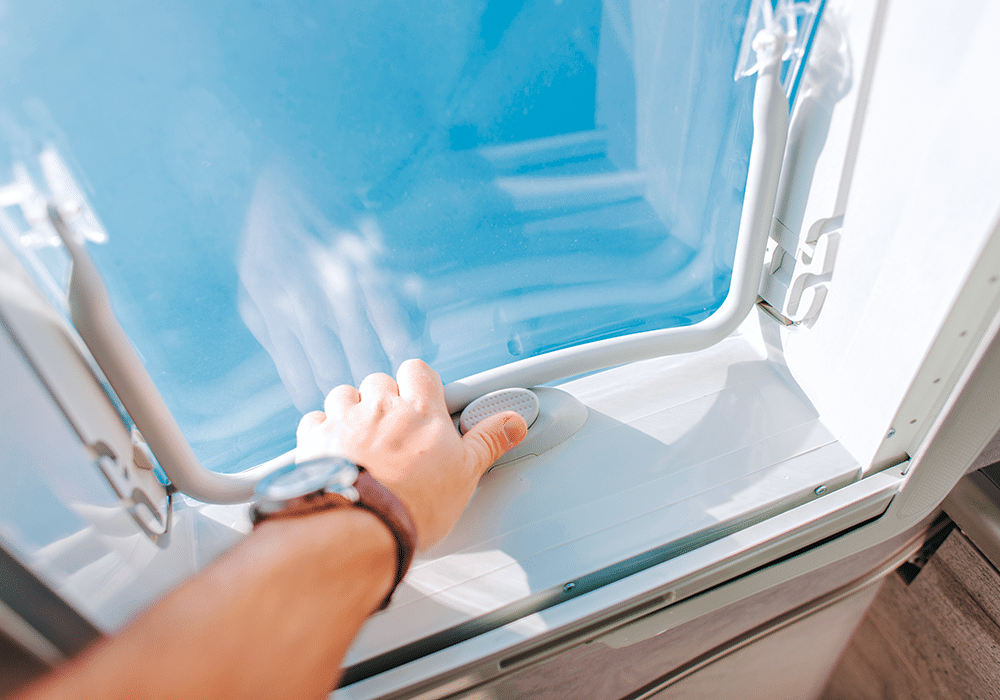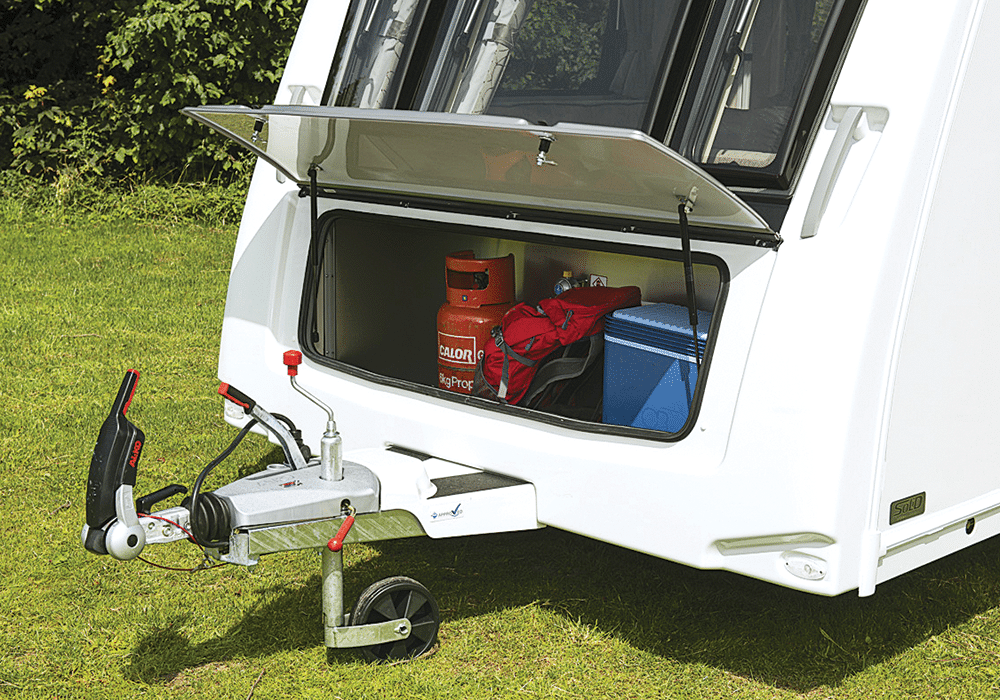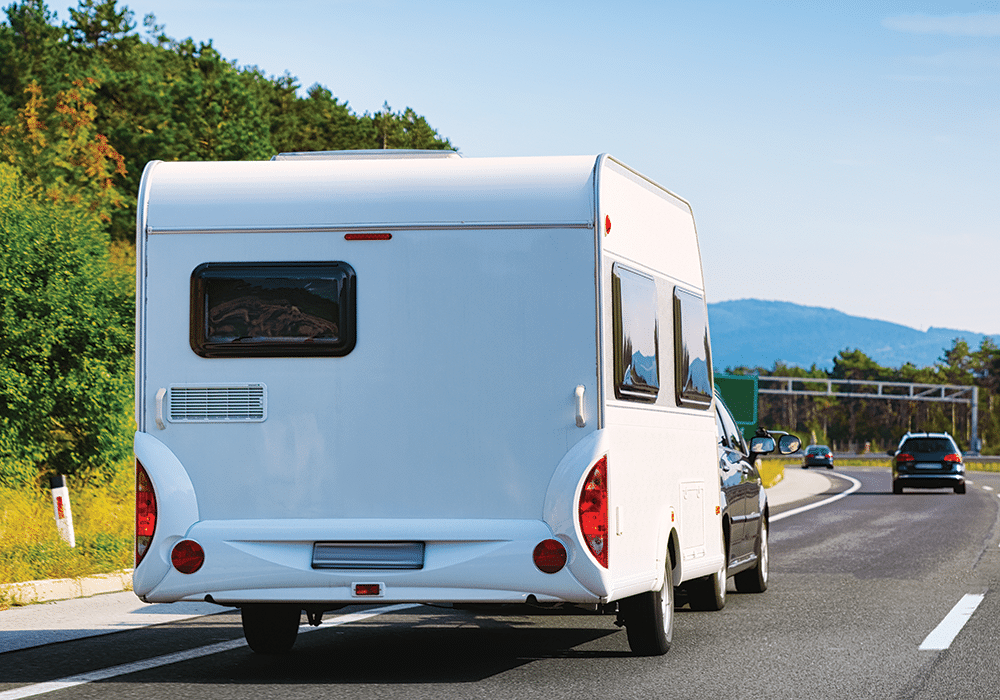Checking that your RV is secure and road-ready before you drive off on holiday or leave the campground is worth taking the time to do properly. Here’s a helpful 5-step checklist to ensure nothing gets forgotten.
Most RV drivers have had the experience of heading out of the campground and around the first corner, only to be greeted by the loud crashing of cups hitting the floor or the clash of the cutlery drawer bursting open.
Generally, these sorts of oversights result in a few frayed nerves, but no harm done. But forget to retract the awning or overlook an obstacle as you reverse and the result could be costly.
Covi NZMCA Insurance Manager Ryan Lewis says some of the most common claims they see tend to happen as drivers are leaving their destination.
To help you avoid those ‘oh no’ moments as you head off on your next adventure, the team at Covi Insurance has put together a handy 5-step predeparture checklist that takes moments to run through and could save a whole lot of headaches.
1. STOW
Loose objects in your motorhome can cause all sorts of issues. So before doing anything else, take the time to stow everything away. Start outside with the bigger items such as your power cable, outdoor furniture, mats, steps, tyre chocks and of course, the awning. Next, move through the interior and put away all those bits and pieces you’ve been using such as the kettle, the cup that’s sitting on the bench, and the shampoo bottles in the bathroom.
2. SWITCH OFF
With everything stowed away, it’s a quick process to go through your RV and switch off the powered items such as the inverter, lights, and the water heater and pump.
3. SHUT AND SECURE
We’ve all done it. Driven halfway down the road before we realise the bathroom skylight is still open. Take a moment to focus on shutting and securing ceiling vents and hatches, cupboards and drawers, exterior lockers, and internal doors. This is a good time to also retract the satellite dish, electric step and slide-outs if you have them.

4. HITCH UP
If you’re towing a caravan, it’s helpful to follow a habitual hitching order. MCD motorhome and caravan reviewer Bill Savidan recommends the following sequence:
- Turn off the LPG bottle.
- Apply the caravan handbrake; raise the corner steadies.
- Raise the tow hitch high enough for the tow-ball to pass underneath.
- If the hitch has stabiliser/hitch levers, raise these.
- Using the jockey wheel handle, lower the hitch until it connects with the tow-ball.
- Lower the stabiliser/hitch levers if necessary.
- Check the security of the connection by raising the hitch 20/30mm using the jockey wheel. The back of the tow vehicle should rise, and the hitch should stay connected. Lower the tow vehicle.
- Apply the tow vehicle handbrake.
- Raise the jockey wheel clear of the ground, disconnect and stow it.
- Plug in the electrical cable for lights etc, ensuring it is clear of the road surface.
- Attach the breakaway cable and/or connect the safety chains.
- Check the tow vehicle handbrake is still on before releasing the caravan brake.
- Disconnect the motor movers if they are engaged.
Once you’ve hitched up, walk around the rig to check all doors, hatches and windows are shut, aerials lowered, and lights are operating correctly. Fit and adjust the extension mirrors if you haven’t already done so. Hitching up is an important procedure so don’t rush it, especially on your first few trips. Put aside 30 minutes to do it and take your time.

5. SCAN
With everything switched off, stowed, secured and hitched, you’re almost ready to go. Almost. The last thing you need to do before you head off is a thorough scan of your RV, and your surroundings. Scan your campground for any items you might have forgotten, then do a quick scan inside and outside your RV to ensure you haven’t missed anything from the first four steps.
Next, scan the travel path between your campsite and the road. Are there any low hanging branches, potholes in the road, children playing, or static objects that could be a collision danger?
The team at Covi NZMCA Insurance deal with more reversing accidents than any other avoidable claim, so it’s worth taking the time to ensure you can do this safely. If necessary, ask fellow campers to move items that you think could pose a risk. Make use of reversing cameras, mirrors, and passengers who can safely guide you out.
Looking for motorhomes or caravans for sale in NZ? Browse our latest listings here.






